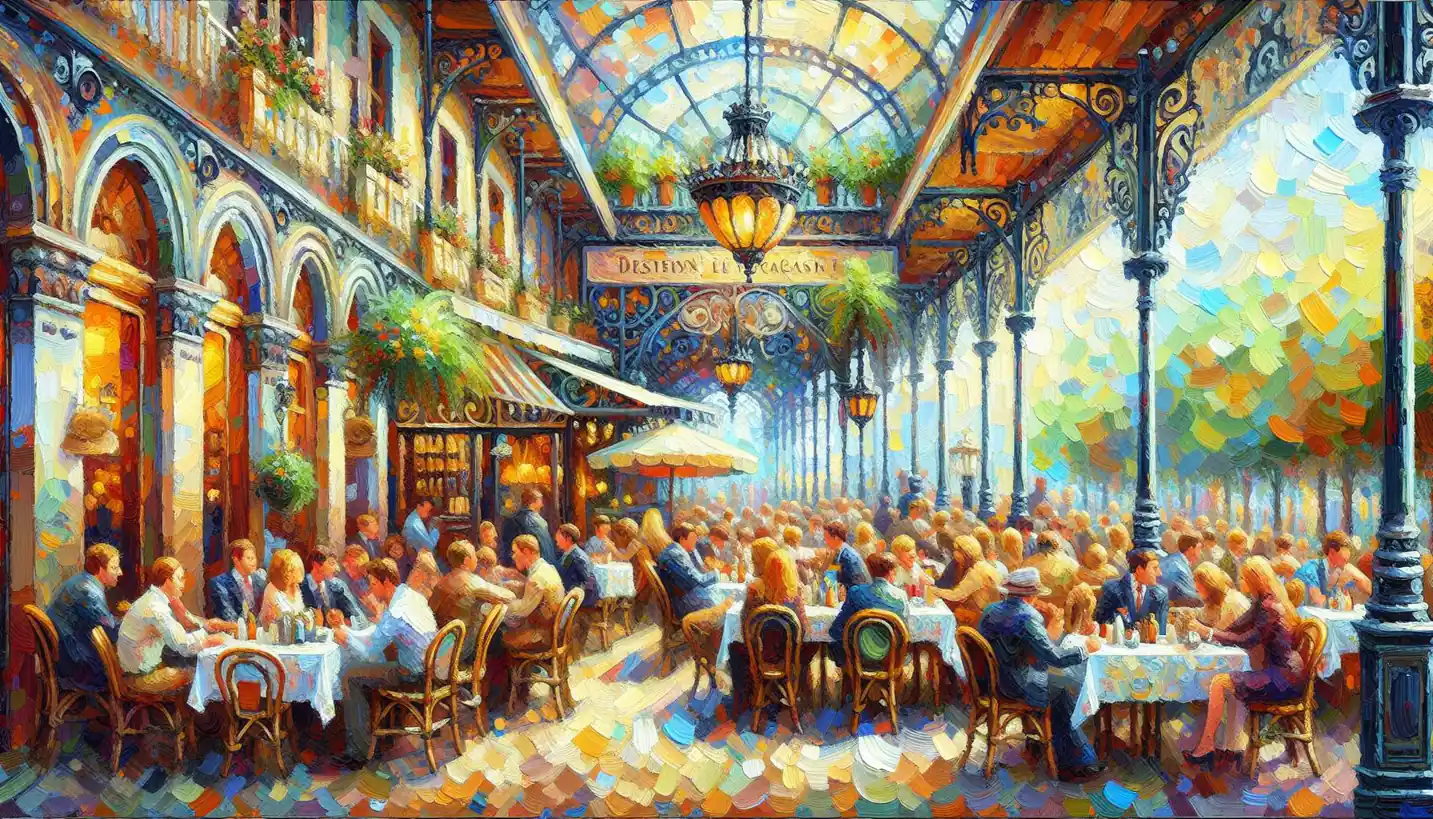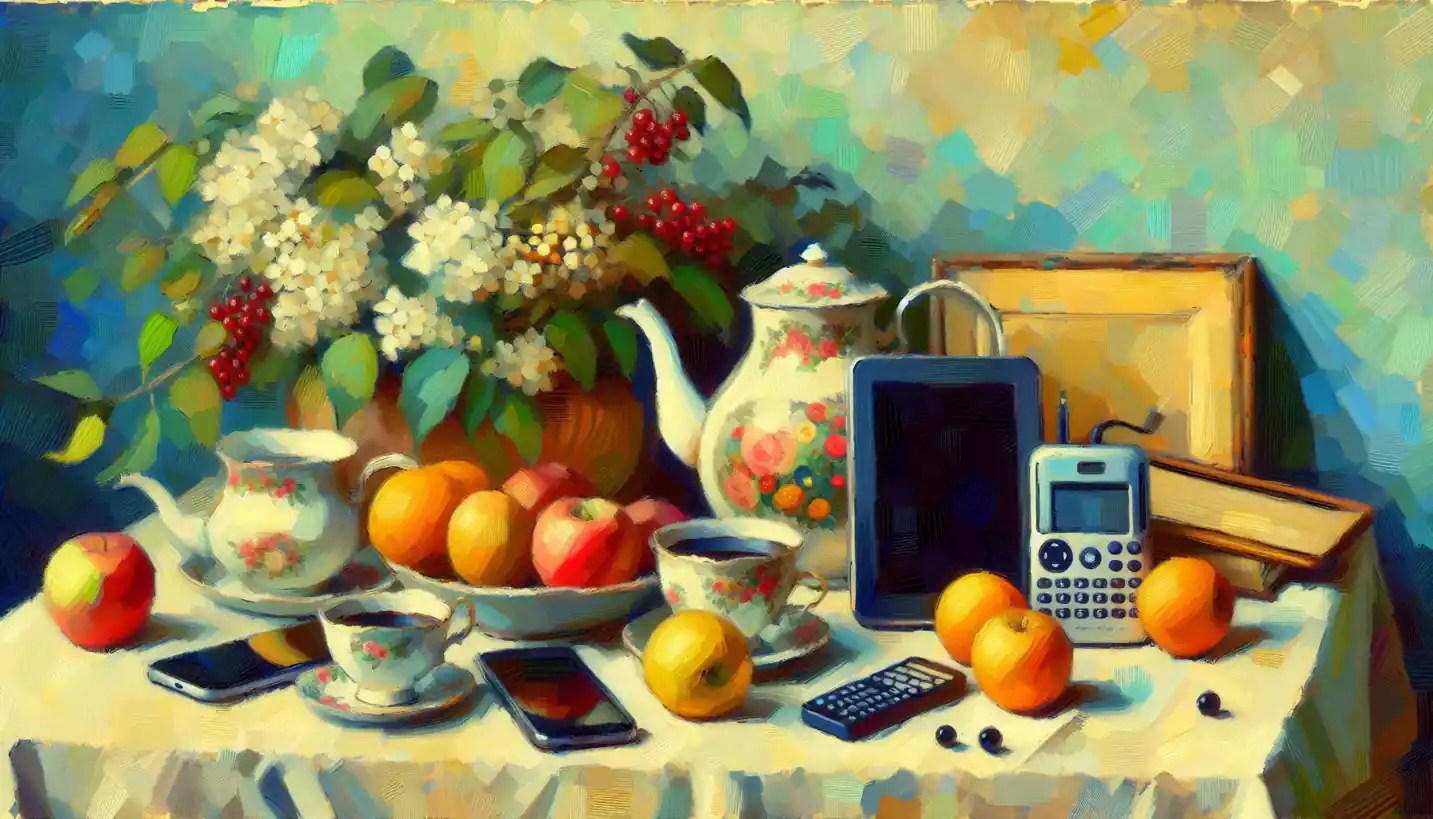· Art · 5 min read
Glaze Magic: Transforming Ceramics into Art
Glaze can turn the ordinary into extraordinary in ceramics. Discover the magic that adds color and life to clay creations.

Ceramics and art often go hand in hand, but one element truly transforms these simple clay pieces into mesmerizing works of art: glaze. This magical medium, which seems ordinary at first, turns lifeless objects into colorful, shiny masterpieces. But what’s really happening when an artist applies glaze to a pottery piece?
Glaze is like a special paint for ceramics. It’s a mixture of powdered minerals and water that gets brushed, dipped, or sprayed onto a piece of pottery. Once applied, the real fun begins when the ceramic piece is placed in a kiln—a special oven where temperatures can soar between 1,800 to 2,400 degrees Fahrenheit. In this fiery environment, the powdered glaze melts and becomes glass-like, sticking to the pottery surface and adding vibrant colors and a glossy finish.
The Alchemy of Minerals
At its core, glaze is a blend of various minerals, kind of like a secret recipe that determines its final look. Some of the key ingredients are silica, feldspar, and metal oxides. Silica is important because it forms the glassy layer, while feldspar helps it melt at the right temperature. Metal oxides, on the other hand, are the magic that brings color. For example, cobalt oxide can turn a glaze a rich blue, while iron oxide might make it earthy brown or red.
Imagine each mineral as a musician in an orchestra. Alone, they each play a specific note, but when combined under the right conditions, they create a symphony.
A Journey Through Time
The use of glaze dates back thousands of years. Ancient potters discovered how to decorate and waterproof their wares using natural substances. Over time, glazing techniques became more sophisticated, allowing artists to achieve a variety of textures and colors. In ancient China, craftsmen developed celadon glazes, known for their subtle green hues, while in the Middle East, lustre glazes created brilliant metallic finishes.
The story of glaze is one of exploration and innovation. Artists throughout history experimented with different firing techniques and materials, constantly pushing the boundaries of what colors and effects they could achieve.
The Science Behind the Shine
When you look at a beautifully glazed pot, it’s easy to forget the complex chemistry at play. As the kiln heats up, the mineral particles in the glaze begin to react. These reactions can be influenced by many factors, such as temperature, atmosphere in the kiln (whether it’s more oxygen-rich or oxygen-poor), and firing duration.
Have you ever baked a cake and noticed how the same recipe can sometimes yield different results? Glazing is similar—subtle changes in conditions can lead to unique outcomes.
Experimenting with Creations
For ceramic artists, the process is both a science and an art. They often keep detailed records of their glaze recipes and firing conditions, allowing them to recreate successful pieces or troubleshoot unexpected results. This experimental process can be incredibly rewarding. Imagine being an artist, discovering a new color after months of trial and error, like uncovering a new star in the galaxy.
A Multidimensional Palette
The range of finishes that glaze can produce is fascinating. Depending on the composition and firing, a glaze can appear matte or glossy, opaque or transparent, smooth or textured. This diversity provides artists with a creative palette that extends beyond traditional paints. Artists can layer glazes to create depth and complexity or use special techniques like wax resist to create intricate patterns.
Consider glazes as the spices in a chef’s kitchen; they add depth and character to the finished dish. With the right glaze, a plain pot transforms into a tactile and visual experience.
Challenges and Innovations
Working with glazes is not without its challenges. The high temperatures and chemical reactions make the process a little unpredictable. Sometimes, colors change unexpectedly, or a crackle effect appears where none was intended. These surprises are sometimes welcomed, resulting in a uniquely beautiful piece. Other times, they serve as lessons that push artists to innovate further.
In recent years, there’s been a push towards developing more environmentally friendly glazes, as traditional ingredients can sometimes include harmful substances. This effort not only aims to protect artists and users but also the planet, making ceramics a sustainable art form.
Beyond Pottery: A Look at Modern Uses
While ceramics are traditionally associated with pottery, glaze technology has found applications beyond the art world. Today, glazes are used in various industries, such as tiling, dentistry, and even advanced coatings for technology. These applications highlight the versatility and importance of glaze in both art and industry.
The Endless Journey
For artists, glaze represents an endless journey of discovery. No two pieces ever come out the same, and each firing offers a new opportunity to learn and create. It’s this unpredictability, coupled with the stunning results, that keeps artists coming back to their kilns, eager to see their clay creations come to life.
In the world of ceramics, glaze is more than just a surface treatment—it’s an essential part of the art itself. By understanding the magic of glaze, we truly appreciate how a simple combination of minerals can add depth, color, and meaning to a piece of ceramic art. Whether you’re an aspiring artist or someone who simply enjoys beautiful pottery, the world of glaze is fascinating and full of surprises. Next time you admire a shiny vase or a colorful bowl, take a moment to consider the science, history, and artistry involved in that gleaming surface.



